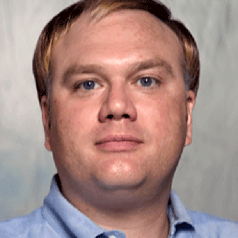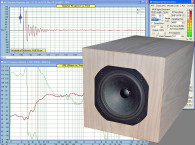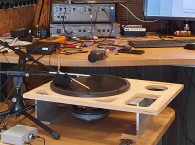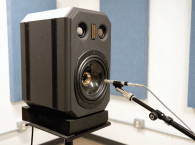Regardless of the method used to perform the measurement, for most engineering work the traditional Bode plot is preferred, showing the frequency response as log magnitude [in decibels (dB)] and the phase in degrees. Since the real and imaginary parts of the frequency response are orthogonal, the phase [in degrees] is actually just a rectangular to polar coordinate conversion:

The phase response depicts delay through a system as the fraction of a cycle (360°) at each frequency. The measured phase of a two-way closed box loudspeaker system is shown in Figure 1. The propagation delay to the measurement microphone has been removed from the data. Note that for any direct radiating loudspeaker system without supplemental low-frequency high-pass filtering, the phase must asymptote to 0° or ±180° at DC. The corresponding group delay appears in Figure 2.
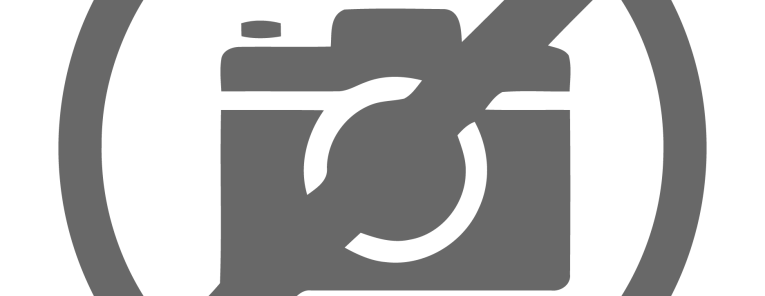

As opposed to phase, group delay is a measure of delay versus frequency from the input to the output of a system in constant units of time (i.e., seconds). It is, therefore, important to keep in mind that the duration of a period (one cycle) is inversely proportional to frequency. Group delay is defined as the negative derivative (or slope) of the unwrapped phase response as a function of frequency:

Group delay, by definition, represents the system delay as a function of frequency, with any processing, propagation, or other “all-pass” delay (sometimes referred to as “excess phase”) removed from the calculation (i.e., it is only the frequency dependent delay corresponding to magnitude and phase variations in the frequency response) [3]. A requirement for proper calculation is that the response be sufficiently sampled in frequency so that the phase shift is never more than 180° between adjacent points. This is a necessary condition in order that it is possible to properly unwrap the phase.
Alternatively, the magnitude of the impulse response also depicts the delay in a system directly in the time domain. In a bandpass, or band-limited system, the peak in the impulse response magnitude represents the average group delay in the passband. However, if the “all-pass” propagation delay of a system is not removed from the calculation, the group delay or impulse response will indicate the propagation delay through the system plus the frequency response dependent phase derivative [4].

Figure 3 shows the Impulse Response magnitude for the same two-way loudspeaker system prior to the removal of the all-pass delay. Recall that the impulse response magnitude is calculated using the Hilbert Transform in order to obtain the analytic time signal. This enables calculation of a magnitude that can be plotted on a log scale with increased detail and dynamic range, sometimes referred to as the Energy Time Curve or ETC [5]. In additional to providing information about the system under test, this can also be useful for setting up a measurement and verifying the distance to the microphone. Note that in this case, the 2.91ms delay at the peak reveals that the measurement microphone is 1m from the loudspeaker. Using the speed of sound this is found as:
x=c×τ=344m/s×0.00291s=1m
Editor’s Note: This article is an expanded version of “Group Delay and Impulse Response” featured in the CJS Lab Notes newsletter Vol. 13, Issue 1, March 2020. To subscribe, visit www.cjs-labs.com. It is highly recommended by Voice Coil. VC
This article was originally published in Voice Coil, December 2020.
References
[1] J. Borwick (Ed.), Loudspeaker and Headphone Handbook, Butterworth & Co, Ltd., 1988, pp. 416-418.
[2] F. E. Toole, Sound Reproduction—The Acoustics and Psychoacoustics of Loudspeakers and Rooms, Focal Press 2008, pp. 418-420.
[3] J. Vanderkooy and S. P. Lipshitz, “Uses and Abuses of the Energy-Time Curve,” Journal of the Audio Engineering Society, Vol. 38, No. 11, November 1990, pp. 819-836.
[4] C. J. Struck and S. F. Temme, “Simulated Free Field Measurements”, Journal of the Audio Engineering Society, Vol. 42, No. 6, June 1994.
[5] R. Heyser, “Determination of Loudspeaker Signal Arrival Times: Part 1,” Journal of the Audio Engineering Society, Vol. 19, No. 9, October 1971, pp. 734-743.
 About the Author
About the AuthorChristopher J. Struck is the CEO and Chief Scientist for CJS Labs, in San Francisco, CA. CJS Labs is a consulting firm specializing in electroacoustics for product design and testing. He is also the Standards Director of the Acoustical Society of America. He has held positions at Brüel&Kjær – Denmark, Charles M. Salter Associates, GN ReSound, and Tymphany Corp. He is a Fellow and former Governor of the Audio Engineering Society, a Fellow of the Acoustical Society of America, a Senior Member of the IEEE, a member of INCE and a member of SMPTE. He holds a degree in Electrical Engineering from the University of Wisconsin – Madison, where his studies also included electronic music composition. He also completed the Stanford Executive Institute and The Center for Creative Leadership programs.
He chairs several national and international standards working groups in ANSI, IEC of three working groups in S3: S3WG37 on Couplers, Ear Simulators, and Earphones, S3WG67 on Manikins, and S3WG73 on Bioacoustical Terminology. He is Head of the US Delegation to IEC Technical Committee 29 – Electroacoustics and Chairs of the US Technical Advisory Group to ISO TC 43 – Acoustics.
He is active on the AES SC-04-03 Working Group on Loudspeaker Modeling and Measurement, the AES SC-04-04 Working Group on Microphones, the S3WG48 Working Group on Hearing Aid Measurements, and the IEEE Working Groups on Communication Device Electroacoustics and Letters Symbols and Abbreviations for Acoustics.
Chris Struck is the author of many technical papers, application notes and articles. He has traveled extensively throughout the world, providing training and lecturing on the topics of acoustics, transducers, signal processing, and measurement.


